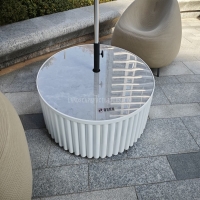Welcome to the website for landscape facilities products and knowledge.
What are the options for integrating the table into a celestial or space-themed design?
When incorporating tables into celestial or space-themed designs, numerous creative possibilities emerge that blend functionality with cosmic aesthetics. One primary approach involves implementing a dark color palette dominated by deep blues, blacks, and purples, reminiscent of the night sky, while using metallic accents in silver, gold, or copper to represent stars and celestial bodies. The table structure itself can be designed to mimic astronomical elements – circular tables representing planets, oval forms suggesting galaxies, or angular designs inspired by constellations.
For digital implementations, consider embedding actual astronomical data within table cells, such as planetary statistics, star magnitudes, or orbital periods, presented with typography that echoes space mission insignia. The background could feature subtle nebula patterns or star fields visible between table cells and borders. Interactive elements might include hover effects that reveal constellation formations or planetary facts when users engage with specific table sections.
Physical table designs can incorporate materials like resin with suspended metallic flakes to create galaxy-like surfaces, LED lighting beneath glass tops to simulate star fields, or engraved celestial maps directly onto the table surface. Table legs might be crafted to resemble rocket fins or telescope tripods, while the overall form could reference satellite components or space station modules.
When styling tabular data for space themes, consider replacing standard grid lines with dotted connections resembling star charts, using planetary colors for different data categories, and incorporating celestial symbols as bullet points or category markers. The header row might feature font styles similar to those used in space mission patches, while alternating row colors could mimic the varying darkness of space between celestial objects.
For educational or scientific contexts, tables can be transformed into proper star charts with coordinate systems, where each cell represents a sector of space with corresponding astronomical information. This approach particularly benefits astronomy websites, planetarium interfaces, or space research presentations where data organization meets celestial visualization. The key is maintaining readability while evoking the mystery and wonder of space through thoughtful design choices that transform ordinary tables into cosmic experiences.
Related search:

Recommendation
Round metal tube border design table with tempered glass or granite countertop on the top.